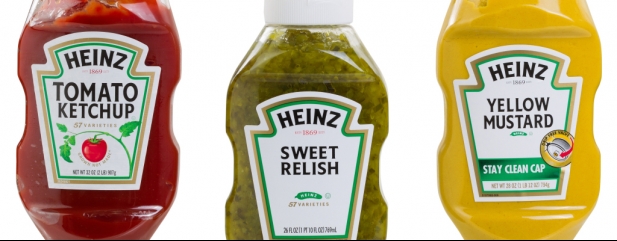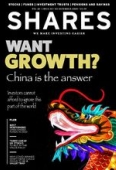Archived article
Please note that tax, investment, pension and ISA rules can change and the information and any views contained in this article may now be inaccurate.
Why Covid winner Kraft Heinz could prove to be a value trap

As the share price uptrend shows, investors are regaining an appetite for US-listed Kraft Heinz, the branded food and beverage behemoth where legendary investor Warren Buffett holds considerable sway.
Yet the $46.3 billion cap remains modestly valued for a global consumer staples giant due to worries over debt levels and the post-pandemic earnings outlook. Next debt is forecast to be $25.56 billion at the end of 2020.
The Nasdaq-traded company has benefitted from elevated demand during the Covid crisis, with restaurants closed and people consuming considerably more food at home, leaving sceptics to question whether its strong sales momentum can continue.
Based on Berenberg’s 2021 earnings per share and dividend per share estimates of 2.4 cents and 1.6 cents respectively, Kraft Heinz trades on an undemanding forward price to earnings ratio of 14.1 – a discount to comparable global peers – while investors are also being paid to wait for a re-rating with an attractive 4.7% dividend yield, though the shares could still be a value trap as we explain in this article.
HOW DOES KRAFT HEINZ MAKE MONEY?
With the stated purpose ‘Let’s Make Life Delicious’ the company is the product of a $55 billion, 2015 combination between Kraft and Heinz that was orchestrated by Buffett’s Berkshire Hathaway and investment group 3G Capital Partners, which had teamed up two years earlier on a buyout of H.J. Heinz.
UK investors will probably recognise the Philadelphia cheese, Heinz ketchup and Kraft cheese maker best for its bold 2017 bid for Unilever (ULVR).

Holding sway over 26.8% and 23.9% of the equity respectively, Berkshire Hathaway and 3G are the biggest shareholders in Kraft Heinz, which makes a diverse array of condiments and sauces, cheese and dairy products, meals, meats and refreshment beverages.
Guided by chief executive Miguel Patricio, the Pittsburgh-headquartered company’s customers span grocers and other retailers, foodservice distributors, hotels, restaurants, hospitals and even government agencies.
Warren Buffett likes to own businesses that control beloved brands that people purchase repeatedly, so one can see why Kraft Heinz appeals to the Sage of Omaha.
Its portfolio of iconic and emerging brands includes Lunchables, Planters, Maxwell House, Kool-Aid, Jell-O and Capri Sun.

IS KRAFT HEINZ A TASTY PROPOSITION?
Kraft Heinz has an enviable brand portfolio, but some of the products have a tired feel to them.
Bears also point to the company’s reliance on cost-cutting and efficiency gains to drive earnings, a key rationale behind its urge to merge with Unilever.
Other companies, such as Nestle for instance, are more focused on investing in the foods of the future. Investors with long memories may also recall Kraft Heinz’s accounting investigation and whopping great write-down, which soured sentiment towards the stock for a time.
Kraft Heinz has been a big beneficiary of Covid-19. Its mostly ‘shelf-stable’ packaged products have seen elevated consumption during a pandemic in which consumers have fallen back on brands they trust and love.
Third quarter results were strong, beating market expectations on both the revenue and profit lines, with organic growth of 6.3% coming in comfortably ahead of the 4.8% consensus forecast.
This growth was driven by both volume and price, with Kraft Heinz generating strong like-for-like gains with US retailers, while the company’s adjusted EBITDA margin rose 170 basis points to 25.9%, north of the 24.6% consensus estimate.
Having previously cautioned that the boom in demand for its brands was unsustainable, management sounded more confident about the organic growth outlook with supermarket basket sizes increasing as consumers continue to cook at home.
‘The continuation of our strong growth into the third quarter is a reflection of the agility we are creating as an organisation and because of that, we are raising our outlook for the full year,’ explained Patricio.
‘We are building momentum, and we are confidently optimistic about our near-term performance,’ he continued.
‘We are heading into 2021 with our new operating model fully implemented, our platform strategy coming to life in the marketplace, and our growth investments ramping up.
‘And although there are multiple future scenarios we must plan for and manage against, we are in a strong position to both accelerate and exceed the strategic plan we finalised earlier this year.’

CAVEAT EMPTOR
Despite the tailwinds behind Kraft Heinz, Berenberg is lukewarm on the stock with a ‘hold’ rating and $37 price target (versus a $33.83 trading price at the time of writing). ‘While investor sentiment is slowly improving, more confidence is required that growth will be fundamentally higher post-Covid-19 to support a sustained re-rating,’ said the broker following the results.
For the 2020 calendar year, Berenberg forecasts a rise in sales from $24.98 billion to $26.1 billion and improved operating profit of just below $5.5 billion, though it forecasts a decline in revenues to $25.1 billion and an operating profit pullback to $5.2 billion in 2021.
Despite falling from their 2017 peak due to lower sales growth, increased investment and supply chain costs, Berenberg concedes that Kraft Heinz’s margins are still best-in-class in packaged food.
Yet Berenberg also says Kraft Heinz faces headwinds in the form of market share gains by retailers’ private label products and pricing pressure as well as retailer destocking.
Big brand owners such as Kraft Heinz are under pressure to consolidate due to international pressure on margins and constraints to their organic growth opportunities, which is one reason why it made its audacious lunge for Unilever, a company with a prized emerging markets footprint.
‘With nearly 80% exposure to North America, there is little international growth to offset domestic pressures,’ warned Berenberg, while also flagging that the company’s new medium-term guidance is for a lacklustre 1% to 2% organic growth per year.
Investors seeking a value stock within the consumer staples space should certainly take a closer look at Kraft Heinz, although they should also be mindful that margins could decline further as it will need to invest heavily to stay competitive and may have exhausted the scope for cost savings.
Berenberg also warns that any decline in earnings in the future could also restrict the group’s ability to pay down debt or even fund the dividend.
SHARES SAYS: Kraft Heinz owns some iconic brands and has deep-pocketed backers in Berkshire Hathaway and 3G, yet we feel the elevated demand seen during the pandemic could drop away once the world returns to some normality. That means growth could disappoint. Avoid.
Important information:
These articles are provided by Shares magazine which is published by AJ Bell Media, a part of AJ Bell. Shares is not written by AJ Bell.
Shares is provided for your general information and use and is not a personal recommendation to invest. It is not intended to be relied upon by you in making or not making any investment decisions. The investments referred to in these articles will not be suitable for all investors. If in doubt please seek appropriate independent financial advice.
Investors acting on the information in these articles do so at their own risk and AJ Bell Media and its staff do not accept liability for losses suffered by investors as a result of their investment decisions.
Issue contents
Editor's View
First-time Investor
Great Ideas
- 122% in four months: This stunning run for The Panoply should continue
- Primark owner Associated British Foods is well placed for a recovery
- Aviva chief delivers on promise to add shareholder value
- Big transactions at Pets at Home following first half results
- Cheap access to a hot style with a 4.9% yield
Money Matters
News
- Investors warned of tracker flip risk ahead of Tesla’s S&P 500 entry
- Here’s why gold has sold off, copper has rallied and oil remains volatile
- Hipgnosis benefits from change in valuation method
- The companies eyeing Arcadia assets after collapse
- Kingspan ESG credentials clouded by Grenfell inquiry
- Life sciences industry veteran David Evans launches new investment company
- Consequences of the pound rally on certain UK stocks
- Fabric coating Covid killer HeiQ to join UK stock market

 magazine
magazine








